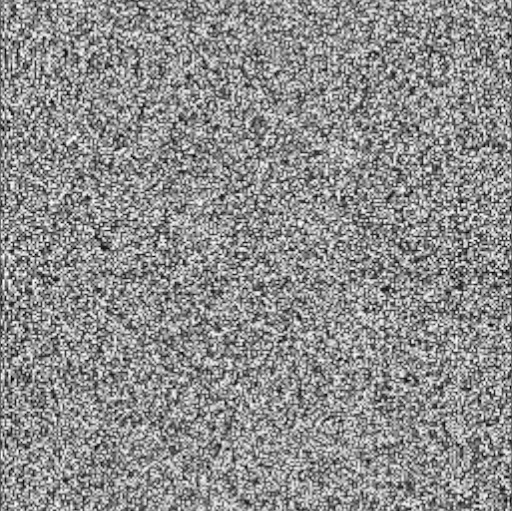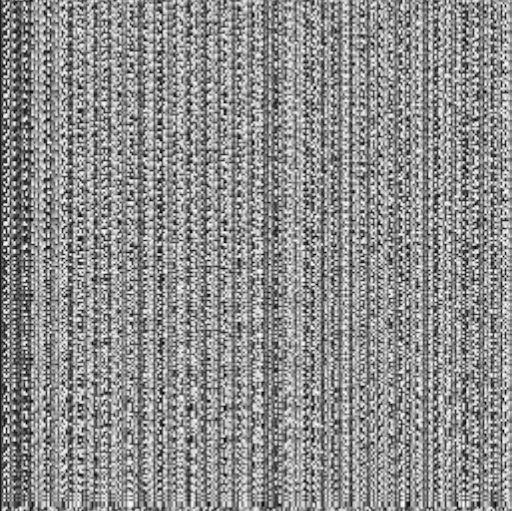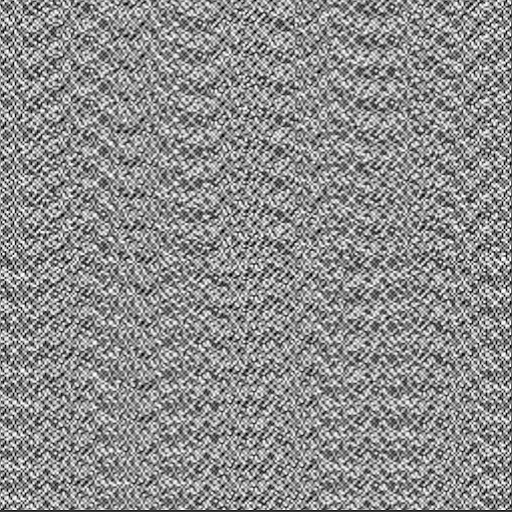A 2023 update
This post is mainly about getting around patterns showing up when hashing consecutive numbers. This is a result of the FNV hash having poor avalanche properties.
A simpler alternative I found to work around this is to hash twice when hashing coordinates. Doing this for each coordinate separately or with bytes concatenated didn’t result in a noticeable difference.
One should also consider alternative hashing algorithms, such as xxHash or MurmurHash. xxHash is available in the System.IO.Hashing package.
Fowler–Noll–Vo 1a
I needed a hashing algorithm that is simple to implement and quick to compute, to be used as a basis for generating perlin noise in Unity.
I couldn’t rely on simple randomness since terrain generation has to be deterministic, especially for multiplayer games.
I ended up implementing the Fowler–Noll–Vo 1a hash, which is known for trading some quality for increased performance. It was designed to be fast, not secure - which is exactly what is needed in the context of procedural generation.
Let me first show you what it looks like (you can use the DebugTexture() method in the code at the bottom of this post to get a sample texture). These images are generated by hashing the coordinates of each pixel and mapping that hash to a color between black and white:
I used a couple tricks to get the hash to look as close as possible to white noise when passing in sequential numbers starting from 0 or near 0.
The first trick is to multiply each coordinate by one of the algorithm’s parameters (the prime number), which gets the bits away from being almost all 0s when hashing low values.
The second trick is to hash the bytes in a random sequence. This sequence is hardcoded for simplicity.
Without these two tricks, the hash looks much less like pure white noise. This is the result if we hash the coordinates as floating point numbers, using no tricks:
And this if we hash coordinates as integers, also with no tricks:
using System;
using System.Text;
using UnityEngine;
/// <summary>
/// An implementation of the Fowler–Noll–Vo 1a hash
/// https://en.wikipedia.org/wiki/Fowler%E2%80%93Noll%E2%80%93Vo_hash_function#FNV-1a_hash
/// http://www.isthe.com/chongo/tech/comp/fnv/index.html
/// </summary>
namespace MarcosPereira.Terrain {
public static class Hash {
/// <summary>
/// 32-bit prime number according to spec.
/// </summary>
private const uint PRIME = 16777619;
/// <summary>
/// 32-bit starting hash value according to spec.
/// </summary>
private const uint OFFSET_BASIS = 2166136261;
public static Texture2D DebugTexture(string seed = "green bananas") {
const int width = 256;
var texture = new Texture2D(
width,
width,
TextureFormat.RGBA32,
false
);
for (int x = 0; x < width; x++) {
for (int y = 0; y < width; y++) {
float random01 = Hash.Get01(x, y, seed);
texture.SetPixel(
x,
y,
Color.Lerp(
Color.black,
Color.white,
random01
)
);
}
}
texture.Apply();
return texture;
}
public static Vector2 GetDirection(Vector2 location, string seed) {
uint hash = Hash.Get(location.x, location.y, seed);
// 0 corresponds to 0 degrees, max value corresponds to 2π - ϵ
float angle = (float) hash / (float) uint.MaxValue;
angle *= (2f * Mathf.PI) - Mathf.Epsilon;
// This vector is already normalized
return new Vector2(Mathf.Cos(angle), Mathf.Sin(angle));
}
public static float Get01(int x, int y, string seed) {
uint value = Hash.Get(x, y, seed);
return Mathf.Clamp01((float) value / (float) uint.MaxValue);
}
public static float Get01(float x, float y, string seed) {
uint value = Hash.Get(x, y, seed);
return Mathf.Clamp01((float) value / (float) uint.MaxValue);
}
public static uint Get(int x, int y, string seed) {
unchecked {
byte[] xb = BitConverter.GetBytes(x * Hash.PRIME);
byte[] yb = BitConverter.GetBytes(y * Hash.PRIME);
return Hash.Get(xb, yb, seed);
}
}
public static uint Get(float x, float y, string seed) {
unchecked {
byte[] xb = BitConverter.GetBytes(x * (float) Hash.PRIME);
byte[] yb = BitConverter.GetBytes(y * (float) Hash.PRIME);
return Hash.Get(xb, yb, seed);
}
}
private static uint Get(byte[] x, byte[] y, string seed) {
// Shuffle the bytes around to improve randomization.
byte[] bytes = new byte[] {
y[3],
x[0],
y[2],
x[1],
y[1],
x[2],
y[0],
x[3]
};
return Hash.Get(bytes, seed);
}
private static uint Get(byte[] bytes, uint offsetBasis) {
uint hash = offsetBasis;
for (int i = 0; i < bytes.Length; i++) {
// Default context should be unchecked for overflow,
// but we make sure.
unchecked {
hash ^= (uint) bytes[i];
hash *= Hash.PRIME;
}
}
return hash;
}
private static uint Get(byte[] bytes, string seed) =>
Hash.Get(bytes, Hash.GetOffsetBasis(seed));
private static uint GetOffsetBasis(string seed) {
// Prevent empty seeds, which would cause offsetBasis of 0, which
// is cautioned against in original hash instructions.
if (string.IsNullOrEmpty(seed)) {
throw new Exception("Null or empty seed string.");
}
// Reasoning for this seeding method:
// "The switch from FNV-0 to FNV-1 was purely to change the
// offset_basis to a non-zero value. The selection of that non-zero
// value is arbitrary."
// Source: http://www.isthe.com/chongo/tech/comp/fnv/index.html#FNV-param
byte[] bytes = Encoding.Unicode.GetBytes(seed);
return Hash.Get(bytes, Hash.OFFSET_BASIS);
}
}
}


